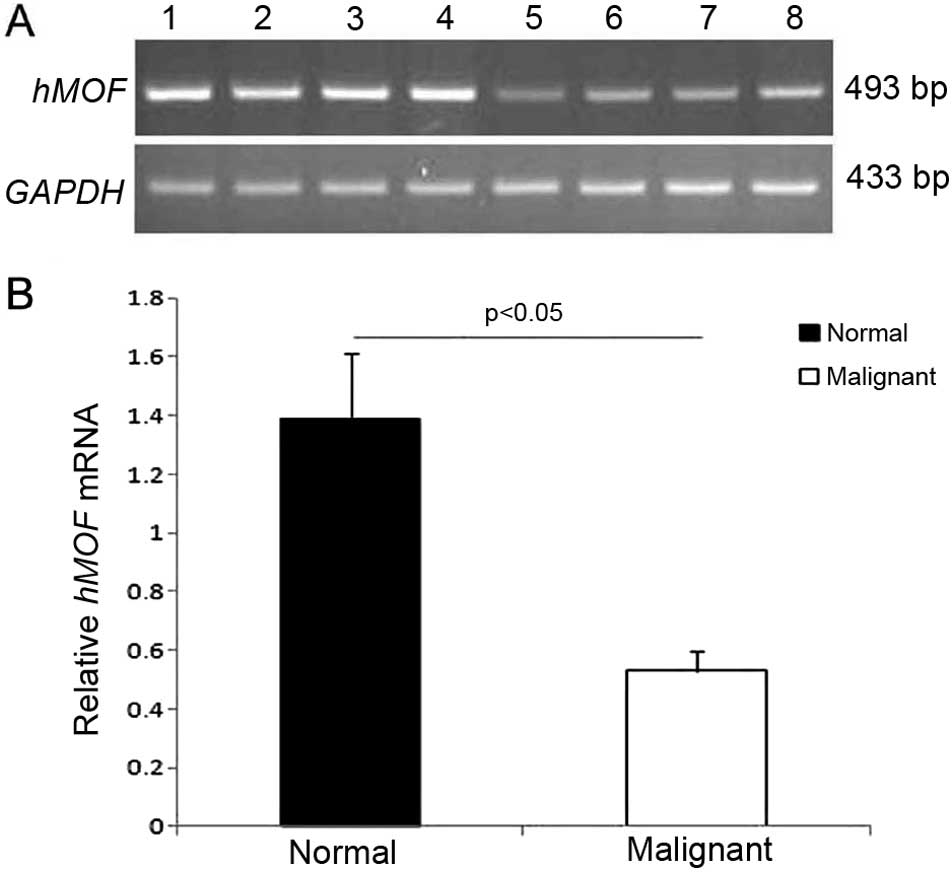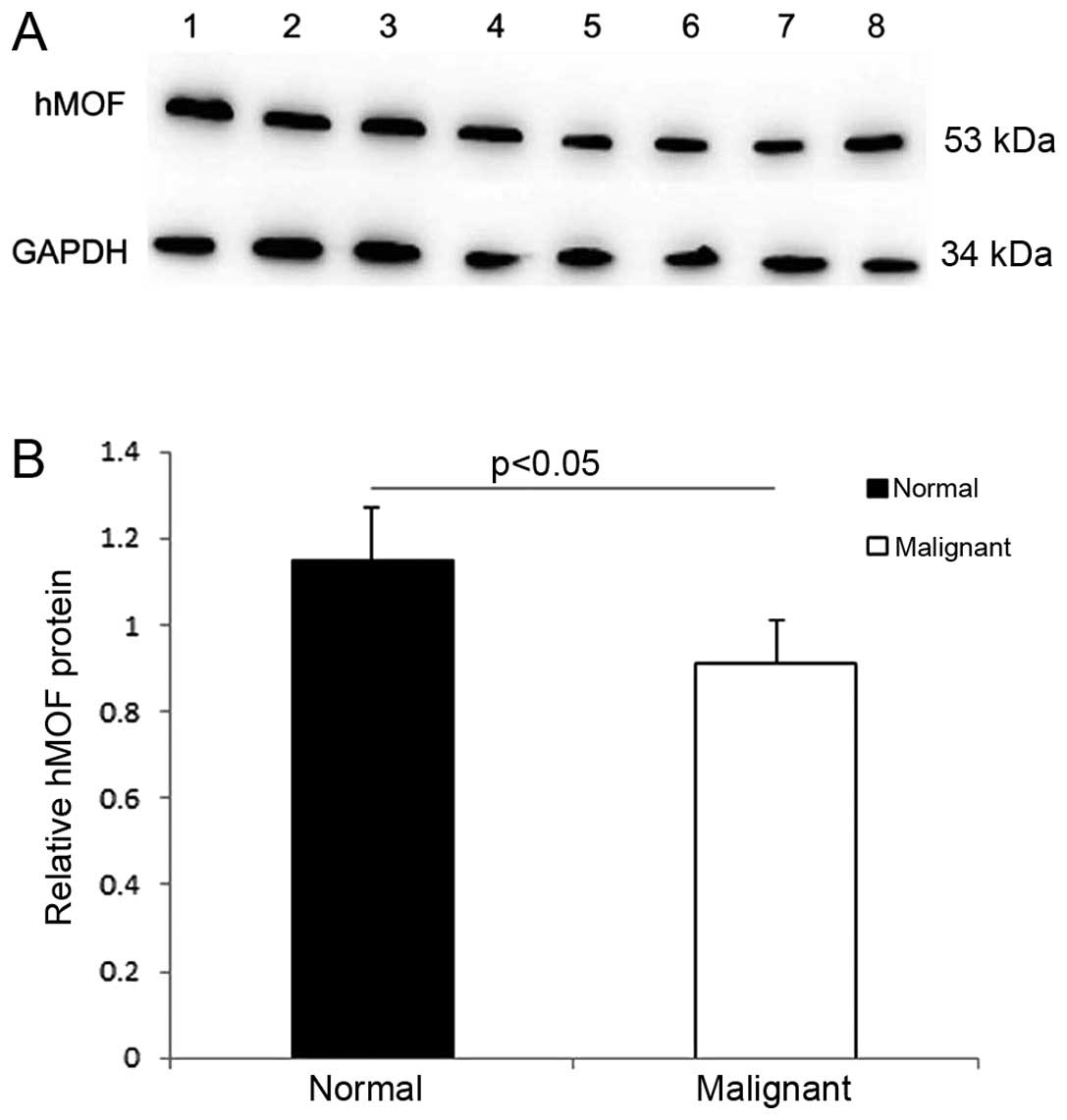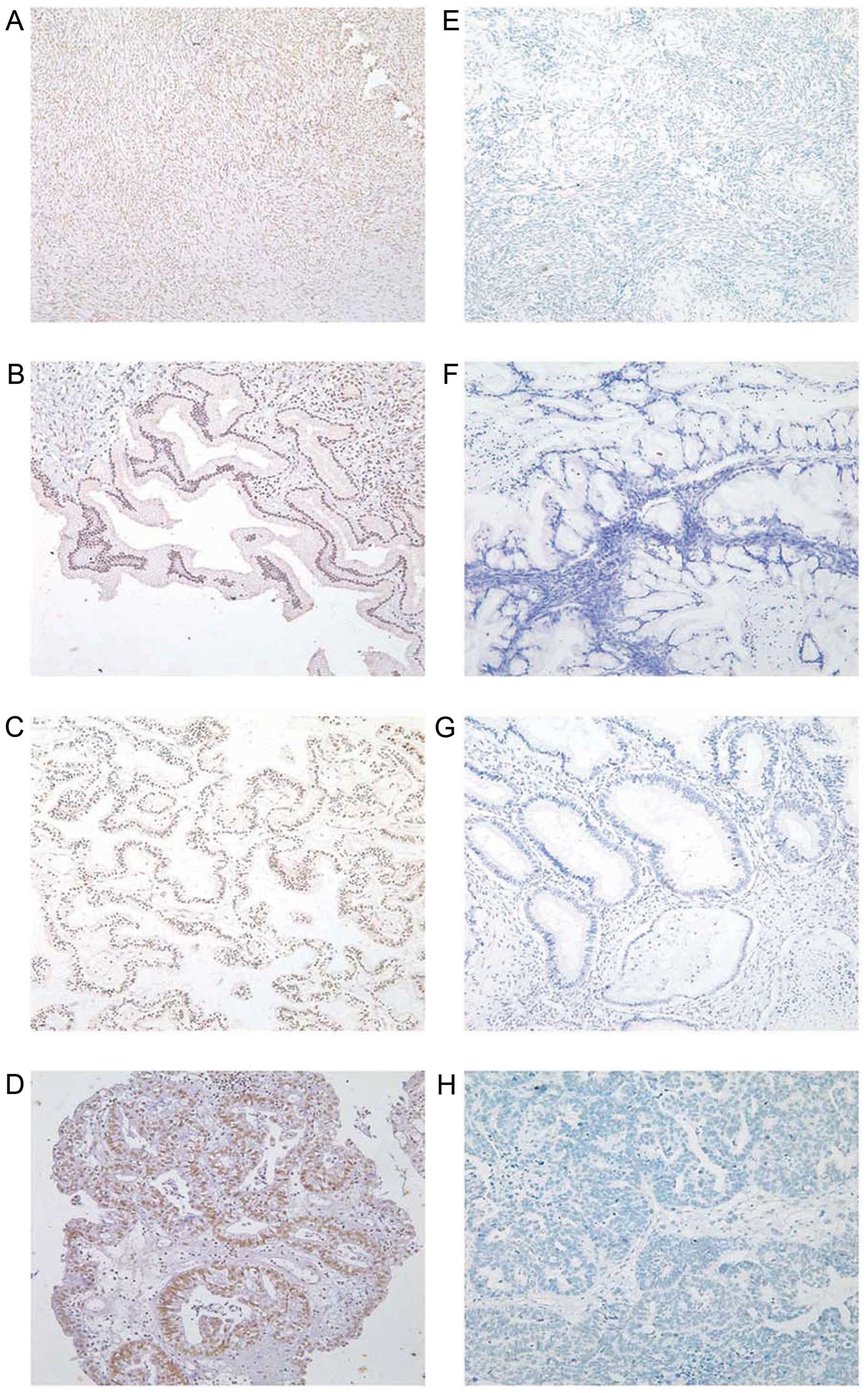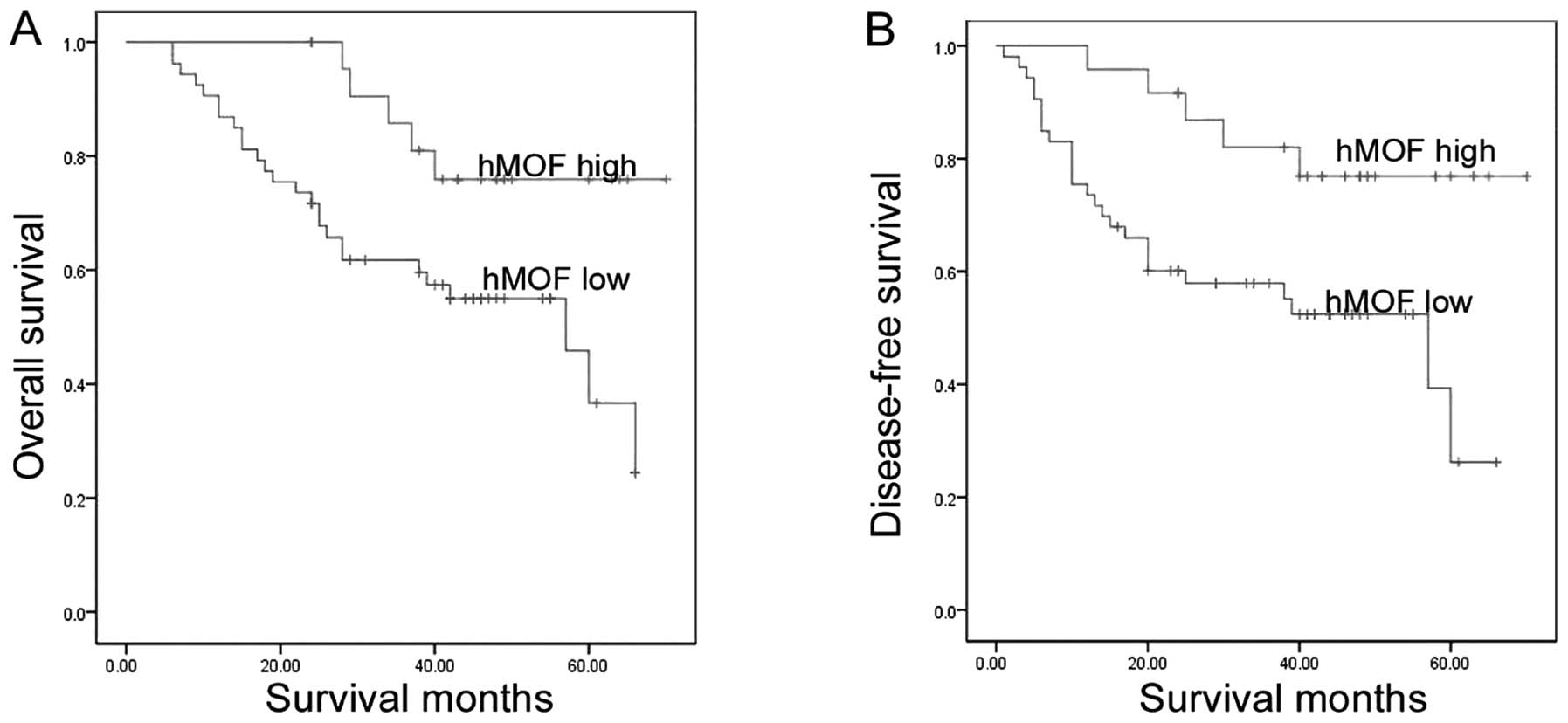|
1
|
Strahl BD and Allis CD: The language of
covalent histone modifications. Nature. 403:41–45. 2000. View Article : Google Scholar : PubMed/NCBI
|
|
2
|
Carrozza MJ, Utley RT, Workman JL and Côté
J: The diverse functions of histone acetyltransferase complexes.
Trends Genet. 19:321–329. 2003. View Article : Google Scholar : PubMed/NCBI
|
|
3
|
Yamada T, Mizuno K, Hirota K, et al: Roles
of histone acetylation and chromatin remodeling factor in a meiotic
recombination hotspot. EMBO J. 23:1792–1803. 2004. View Article : Google Scholar : PubMed/NCBI
|
|
4
|
Eberharter A and Becker PB: Histone
acetylation: a switch between repressive and permissive chromatin.
Second in review series on chromatin dynamics. EMBO Rep. 3:224–229.
2002. View Article : Google Scholar : PubMed/NCBI
|
|
5
|
Yang XJ: The diverse superfamily of lysine
acetyltransferases and their roles in leukemia and other diseases.
Nucleic Acids Res. 32:959–976. 2004. View Article : Google Scholar : PubMed/NCBI
|
|
6
|
Saha RN and Pahan K: HATs and HDACs in
neurodegeneration: a tale of disconcerted acetylation homeostasis.
Cell Death Differ. 13:539–550. 2006. View Article : Google Scholar
|
|
7
|
Ito K, Charron CE and Adcock IM: Impact of
protein acetylation in inflammatory lung diseases. Pharmacol Ther.
116:249–265. 2007. View Article : Google Scholar : PubMed/NCBI
|
|
8
|
Gayther SA, Batley SJ, Linger L, et al:
Mutations truncating the EP300 acetylase in human cancers. Nat
Genet. 24:300–303. 2000. View
Article : Google Scholar : PubMed/NCBI
|
|
9
|
Halkidou K, Gaughan L, Cook S, Leung HY,
Neal DE and Robson CN: Upregulation and nuclear recruitment of
HDAC1 in hormone refractory prostate cancer. Prostate. 59:177–189.
2004. View Article : Google Scholar : PubMed/NCBI
|
|
10
|
Yang XJ and Seto E: Lysine acetylation:
codified crosstalk with other posttranslational modifications. Mol
Cell. 31:449–461. 2008. View Article : Google Scholar : PubMed/NCBI
|
|
11
|
Hilfiker A, Hilfiker-Kleiner D, Pannuti A
and Lucchesi JC: mof, a putative acetyl transferase gene related to
the Tip60 and MOZ human genes and to the SAS genes of yeast, is
required for dosage compensation in Drosophila. EMBO J.
16:2054–2060. 1997. View Article : Google Scholar : PubMed/NCBI
|
|
12
|
Akhtar A and Becker PB: Activation of
transcription through histone H4 acetylation by MOF, an
acetyltransferase essential for dosage compensation in Drosophila.
Mol Cell. 5:367–375. 2000. View Article : Google Scholar : PubMed/NCBI
|
|
13
|
Thomas T, Dixon MP, Kueh AJ and Voss AK:
Mof (MYST1 or KAT8) is essential for progression of embryonic
development past the blastocyst stage and required for normal
chromatin architecture. Mol Cell Biol. 28:5093–5105. 2008.
View Article : Google Scholar : PubMed/NCBI
|
|
14
|
Li X, Li L, Pandey R, et al: The histone
acetyltransferase MOF is a key regulator of the embryonic stem cell
core transcriptional network. Cell Stem Cell. 11:163–178. 2012.
View Article : Google Scholar : PubMed/NCBI
|
|
15
|
Smith ER, Cayrou C, Huang R, Lane WS, Côté
J and Lucchesi JC: A human protein complex homologous to the
Drosophila MSL complex is responsible for the majority of histone
H4 acetylation at lysine 16. Mol Cell Biol. 25:9175–9188. 2005.
View Article : Google Scholar : PubMed/NCBI
|
|
16
|
Cai Y, Jin J, Swanson SK, et al: Subunit
composition and substrate specificity of a MOF-containing histone
acetyltransferase distinct from the male-specific lethal (MSL)
complex. J Biol Chem. 285:4268–4272. 2010. View Article : Google Scholar :
|
|
17
|
Taipale M, Rea S, Richter K, et al: hMOF
histone acetyltransferase is required for histone H4 lysine 16
acetylation in mammalian cells. Mol Cell Biol. 25:6798–6810. 2005.
View Article : Google Scholar : PubMed/NCBI
|
|
18
|
Rea S, Xouri G and Akhtar A: Males absent
on the first (MOF): from flies to humans. Oncogene. 26:5385–5394.
2007. View Article : Google Scholar : PubMed/NCBI
|
|
19
|
Pfister S, Rea S, Taipale M, et al: The
histone acetyltransferase hMOF is frequently downregulated in
primary breast carcinoma and medulloblastoma and constitutes a
biomarker for clinical outcome in medulloblastoma. Int J Cancer.
122:1207–1213. 2008. View Article : Google Scholar
|
|
20
|
Wang Y, Zhang R, Wu D, et al: Epigenetic
change in kidney tumor: downregulation of histone acetyltransferase
MYST1 in human renal cell carcinoma. J Exp Clin Cancer Res.
32:82013. View Article : Google Scholar : PubMed/NCBI
|
|
21
|
Zhao L, Wang DL, Liu Y, Chen S and Sun FL:
Histone acetyltransferase hMOF promotes S phase entry and
tumorigenesis in lung cancer. Cell Signal. 25:1689–1698. 2013.
View Article : Google Scholar : PubMed/NCBI
|
|
22
|
Liu N, Zhang R, Zhao X, et al: A potential
diagnostic marker for ovarian cancer: Involvement of the histone
acetyltransferase, human males absent on the first. Oncol Lett.
6:393–400. 2013.PubMed/NCBI
|
|
23
|
Cao L, Zhu L, Yang J, et al: Correlation
of low expression of hMOF with clinicopathological features of
colorectal carcinoma, gastric cancer and renal cell carcinoma. Int
J Oncol. 44:1207–1214. 2014.PubMed/NCBI
|
|
24
|
Gupta A, Sharma GG, Young CS, et al:
Involvement of human MOF in ATM function. Mol Cell Biol.
25:5292–5305. 2005. View Article : Google Scholar : PubMed/NCBI
|
|
25
|
Mendjan S, Taipale M, Kind J, et al:
Nuclear pore components are involved in the transcriptional
regulation of dosage compensation in Drosophila. Mol Cell.
21:811–823. 2006. View Article : Google Scholar : PubMed/NCBI
|
|
26
|
Sykes SM, Mellert HS, Holbert MA, et al:
Acetylation of the p53 DNA-binding domain regulates apoptosis
induction. Mol Cell. 24:841–851. 2006. View Article : Google Scholar : PubMed/NCBI
|
|
27
|
Hajji N, Wallenborg K, Vlachos P,
Füllgrabe J, Hermanson O and Joseph B: Opposing effects of hMOF and
SIRT1 on H4K16 acetylation and the sensitivity to the topoisomerase
II inhibitor etoposide. Oncogene. 29:2192–2204. 2010. View Article : Google Scholar : PubMed/NCBI
|













